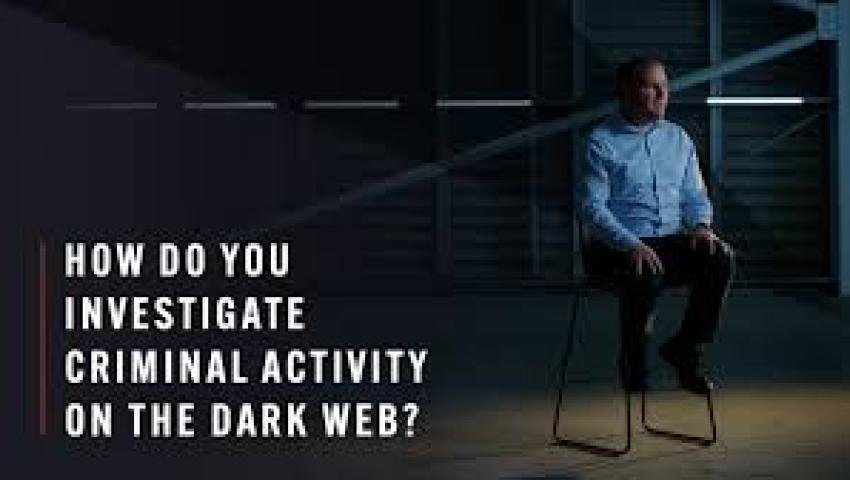
Unmasking TOR: Techniques & Tools for Tracking Criminal Activity on the Dark Web
The answer lies not in breaking TOR's encryption—which is notoriously difficult—but in applying sophisticated Open-Source Intelligence (OSINT) techniques to the human and infrastructural elements that inevitably leak information. This post explores the methods and tools used to pierce the veil of anonymity.
Unmasking TOR: Techniques & Tools for Tracking Criminal Activity on the Dark Web
The Dark Web, often synonymous with the TOR network, represents a formidable challenge in the fight against cybercrime. It’s a realm designed for anonymity, where illicit marketplaces, hacker forums, and threat actors operate behind multiple layers of encryption. For investigators, the question is: how can you track what is deliberately designed to be untraceable?
The answer lies not in breaking TOR's encryption—which is notoriously difficult—but in applying sophisticated Open-Source Intelligence (OSINT) techniques to the human and infrastructural elements that inevitably leak information. This post explores the methods and tools used to pierce the veil of anonymity.
First, a Reality Check: Understanding the Limits
It's crucial to understand that directly de-anonymizing a TOR user through technical means alone is a task for highly resourced state actors and involves exploiting vulnerabilities in the TOR browser or network. However, for OSINT investigators and law enforcement, success is often found by targeting the perimeter of anonymity. Criminals make mistakes; they create operational security (OPSEC) failures by connecting their dark web and clear web lives.
The primary goal is correlation and attribution.
The Achilles' Heel of TOR: Where Anonymity Fails
Tracking on the Dark Web is possible because anonymity is a process, not a guaranteed state. Key vulnerabilities include:
Human Error: The biggest vulnerability. Users post the same pseudonyms on clear web forums, reuse email addresses, or accidentally leak personal information.
Service Misconfiguration: Dark web sites ("onion services") can be misconfigured, leaking their real IP address in server logs or through network calls.
Code and Content Leaks: Criminals often reuse code, images, PGP keys, or writing styles across different platforms, creating a unique fingerprint.
Intersection with the Clear Web: To attract users, marketplaces and forums must be advertised. This happens on clear web social media platforms, review sites, and forums, creating a bridge between the anonymous and identified worlds.
Key Techniques for Investigation
1. Dark Web Site Monitoring & Profiling
The first step is understanding the target site itself.
Technique: Continuously monitor onion services for changes in content, administrator announcements, and user activity. This involves archiving site versions and analyzing the infrastructure.
Tools:
OnionScan: A dedicated tool for scanning onion services for common misconfigurations, such as IP address leaks, open directories, and software version disclosure.
The Wayback Machine ( archive.today ): While not all Dark Web sites are archived, some are, especially if they have a significant clear web presence. Archive.today is particularly useful for capturing specific pages.
Custom Scripts: Many investigators write scripts to periodically scrape onion sites for data like product listings, PGP keys, and vendor names to track changes over time.
2. Content & Behavioral Fingerprinting
Criminals are creatures of habit. Their digital fingerprints are often left behind.
Technique: Analyze unique identifiers within the content of dark web posts and listings.
What to Look For:
PGP Keys: A vendor's PGP key is a unique cryptographic identity. If the same key appears on a dark web marketplace and a clearnet forum, it definitively links the two personas.
Images & Media: Use reverse image search tools on product photos. Criminals often steal photos from clear web e-commerce sites or, crucially, sometimes upload their own, which can be traced back to social media profiles.
Linguistic Analysis: Unique phrasing, grammatical errors, slang, and writing style can be correlated across platforms. Software can help analyze writing style (stylometry).
3. Correlation with Clear Web Activity
This is the most powerful OSINT technique. The Dark Web does not exist in a vacuum.
Technique: Actively search for dark web monikers, PGP keys, and other unique identifiers on the clear web.
Tools:
Standard Search Engines (Google, Bing): Search for a vendor's name in quotes, along with keywords like "reviews," "reddit," or "forum."
Specialized Forums: Sites like Dread (a Reddit-like forum for dark web users) are treasure troves of information, but often require access through TOR. Clear web sites like DarknetLive also aggregate news and reviews.
Social Media Platforms (Telegram, Discord): Threat actors increasingly use encrypted messaging apps to advertise their dark web services. Searching for their moniker on Telegram can yield direct contact channels and leaks of personal information.
4. Blockchain Analysis for Cryptocurrency Tracking
While Bitcoin and Monero offer pseudonymity, they are not perfectly anonymous. This is a critical area for financial investigation.
Technique: Follow the money. Cryptocurrency transactions are recorded on public ledgers (blockchains). By analyzing transaction flows, investigators can link Bitcoin addresses to real-world entities (exchanges) where KYC (Know Your Customer) laws apply.
Tools:
Chainalysis Reactor: A premier commercial tool used by law enforcement to visualize and track cryptocurrency transactions across the blockchain.
Elliptic: Provides blockchain analytics for risk management and compliance, helping to identify illicit activity.
WalletExplorer.com : A useful free tool for grouping Bitcoin addresses and identifying wallets belonging to known services (like exchanges).
A Practical Investigative Workflow
Let's imagine tracking a dark web vendor, "PharmaX," selling illicit substances.
Profile the Target: On the marketplace, you archive PharmaX's profile, extract their PGP public key, and download their product images.
Content Analysis:
You run the product images through a reverse image search tool like Yandex Images or Tineye. One image matches a photo from a Polish e-commerce site.
You search the clear web for the exact PGP public key string. You find it posted on a clearnet forum by a user named "MedSupplier99" asking a technical question about chemicals two years ago.
Behavioral & Correlation Analysis:
You search for "PharmaX" on Dread and other dark web review sites. Users complain about shipping times from a specific country in Eastern Europe.
You search for "MedSupplier99" on Telegram. You find a channel where the user promotes their business. In a casual chat, they mention the city they live in.
Financial Tracking: You identify the Bitcoin address PharmaX uses for payments. Using a blockchain explorer, you see a large volume of transactions flowing into an address known to belong to a major cryptocurrency exchange. A legal subpoena to that exchange could reveal the account holder's identity.
Ethical and Legal Considerations
Authorization: Never access dark web marketplaces or interact with criminals without explicit legal authority. Simply visiting some sites may be illegal in your jurisdiction.
OPSEC (Your Own): Conduct research from a dedicated, secure environment. Use a virtual machine and ensure you do not accidentally leak personal information. Law enforcement uses dedicated infrastructure.
Intent: The techniques described are for cybersecurity threat intelligence, law enforcement, and academic research—not for vigilantism or harassment.
Conclusion: A Battle of Wits, Not Just Technology
Unmasking TOR activity is less about cryptographic brute force and more about meticulous detective work. It's a battle of wits that leverages human error and the inherent need for criminals to connect with a wider audience. By systematically applying OSINT techniques—correlating identities, analyzing content, and following the money—investigators can successfully track criminal activity on the Dark Web, turning the criminals' own mistakes into the tools for their downfall.
The Dark Web provides anonymity, but it is not a shield against poor OPSEC. And that is where the investigation begins.
Mrityunjay Singh
Leave a comment
Your email address will not be published. Required fields are marked *

